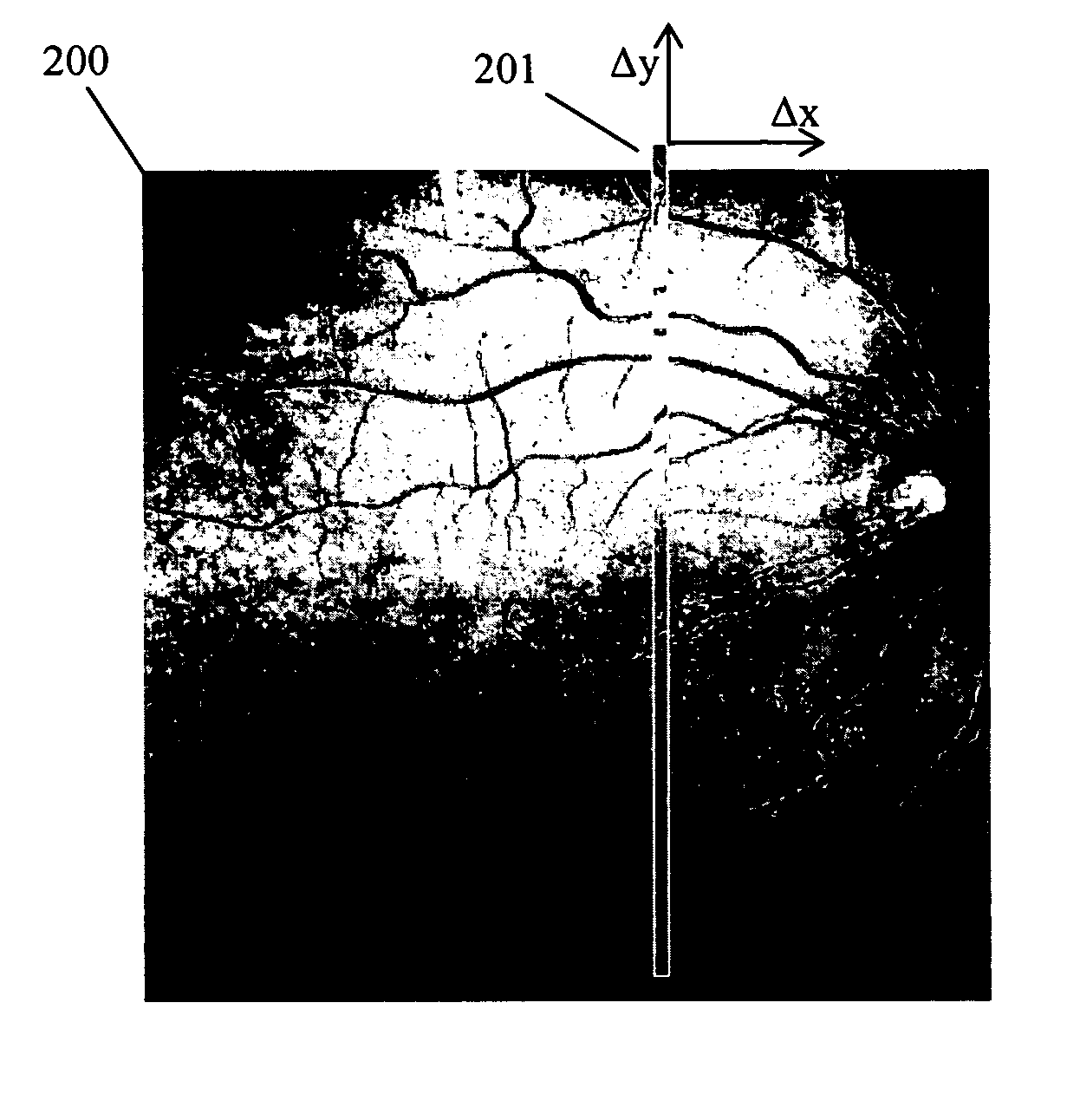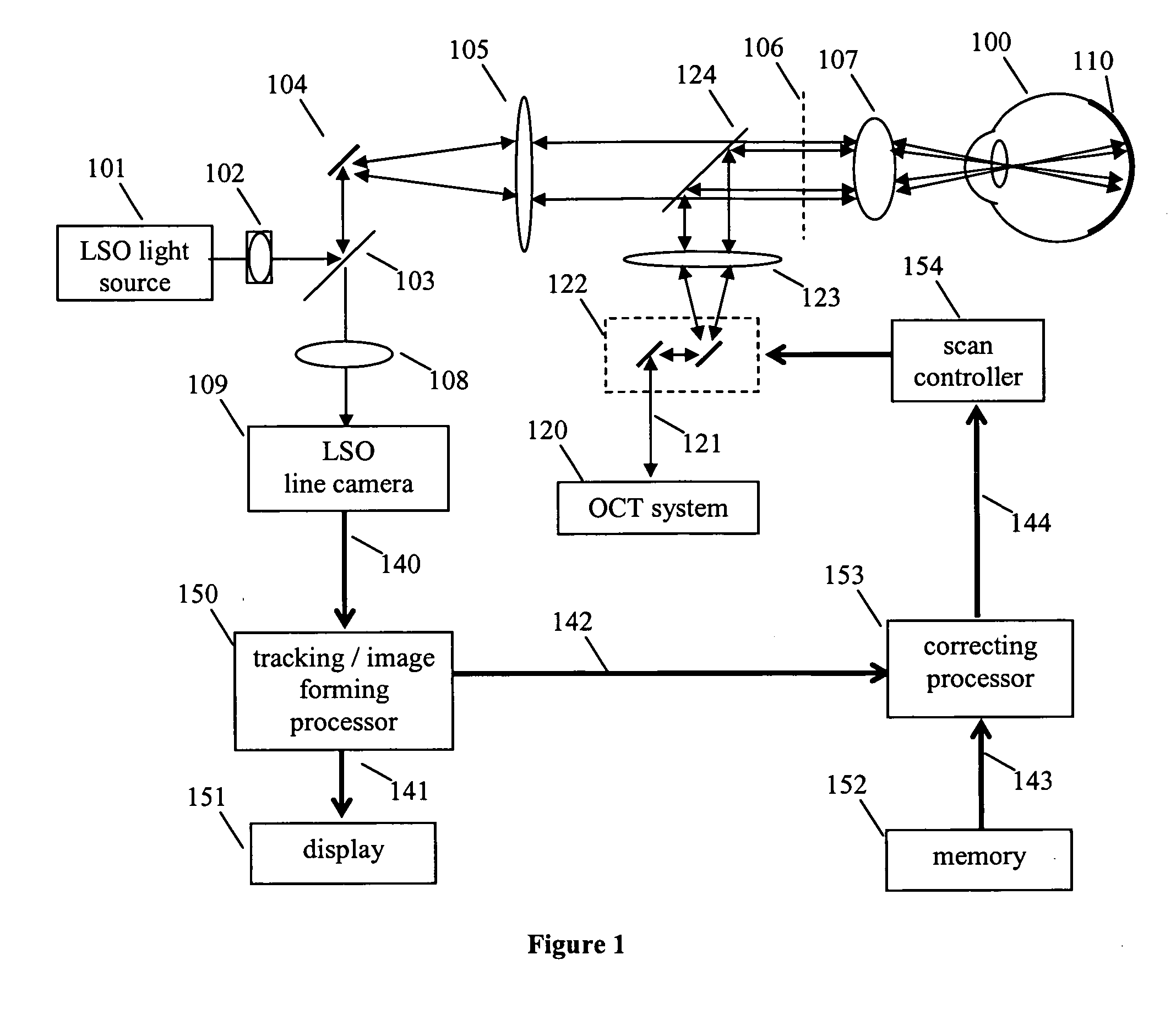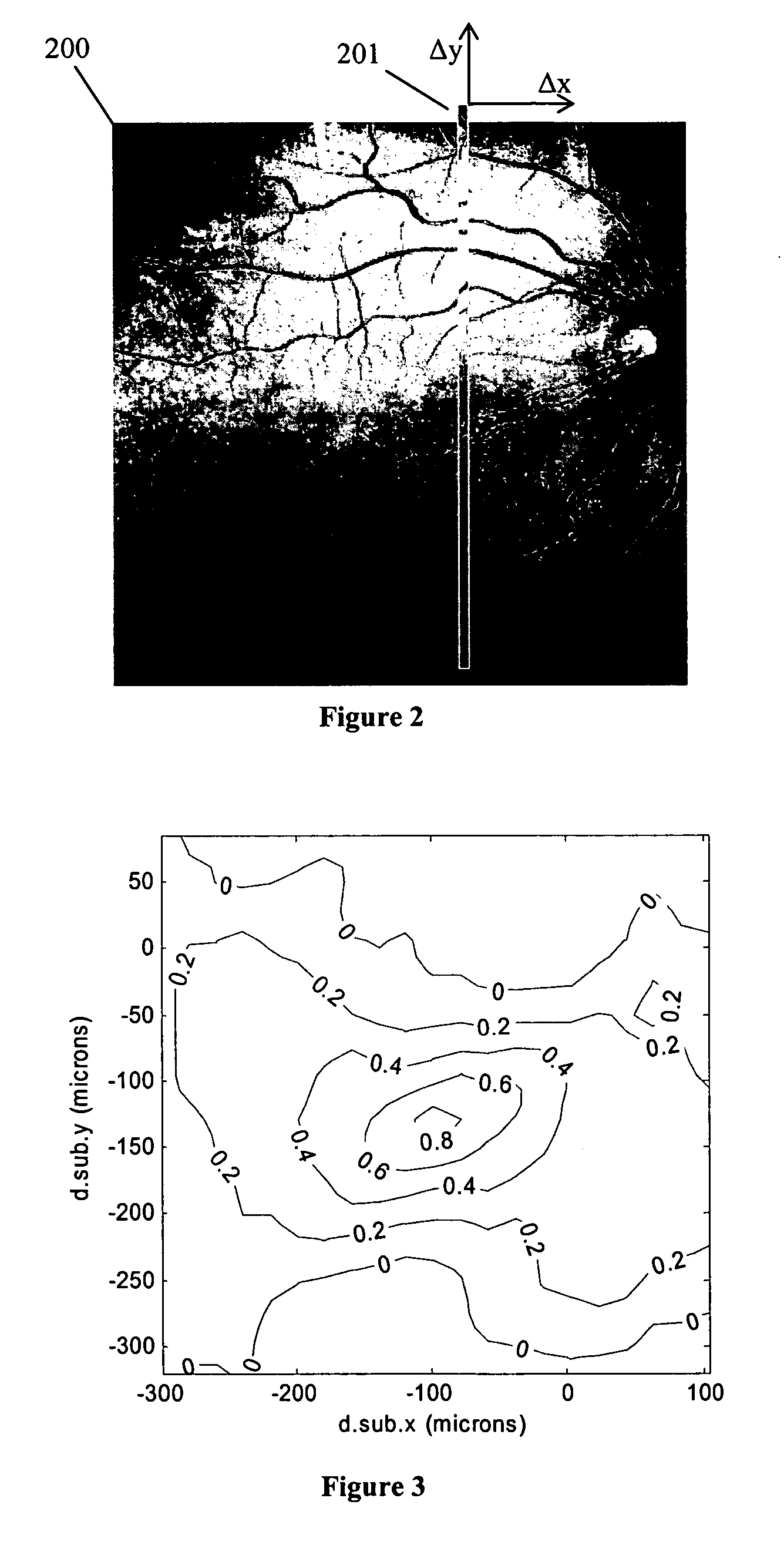Method and apparatus for measuring motion of a subject using a series of partial images from an imaging system
a technology of imaging system and partial image, applied in the field of tracking the position of objects, can solve the problems of not always finding good landmarks in diseased tissue, incurring extra costs, and not being able to detect errors in application of directed beams
- Summary
- Abstract
- Description
- Claims
- Application Information
AI Technical Summary
Benefits of technology
Problems solved by technology
Method used
Image
Examples
Embodiment Construction
[0023]FIG. 1 is a schematic illustration of an OCT measurement system incorporating eye tracking based on a line-scan ophthalmoscope (LSO). Light from the LSO light source 101 is routed by cylindrical lens 102 and beamsplitter 103 to scanning mirror 104. The cylindrical lens 102 and the scan lens 105 produce a line of illumination at the retinal image plane 106, and the ocular lens 107 and optics of the human eye 100 re-image this line of illumination onto the retina 110. The line of illumination is swept across the retina as the scanning mirror 104 rotates. Reflected light from the retina approximately reverses the path of the LSO illumination light; the reflected light is de-scanned by the LSO scan mirror 104 so that the illuminated portion of the retina is continuously imaged by imaging lens 108 onto the LSO line camera 109. The LSO line camera converts the reflected LSO light into a data stream 140 representing single-line partial images, which are processed to form both eye tra...
PUM
 Login to View More
Login to View More Abstract
Description
Claims
Application Information
 Login to View More
Login to View More - R&D
- Intellectual Property
- Life Sciences
- Materials
- Tech Scout
- Unparalleled Data Quality
- Higher Quality Content
- 60% Fewer Hallucinations
Browse by: Latest US Patents, China's latest patents, Technical Efficacy Thesaurus, Application Domain, Technology Topic, Popular Technical Reports.
© 2025 PatSnap. All rights reserved.Legal|Privacy policy|Modern Slavery Act Transparency Statement|Sitemap|About US| Contact US: help@patsnap.com



